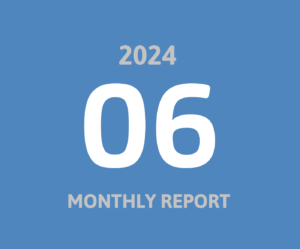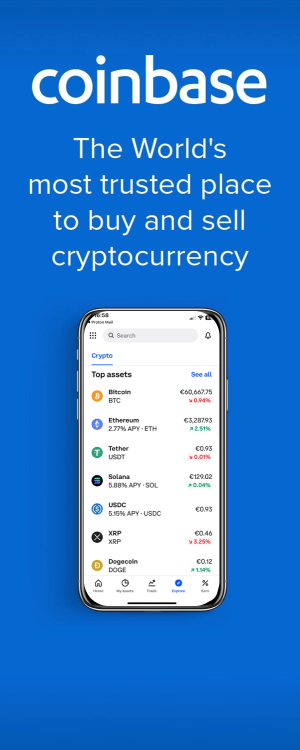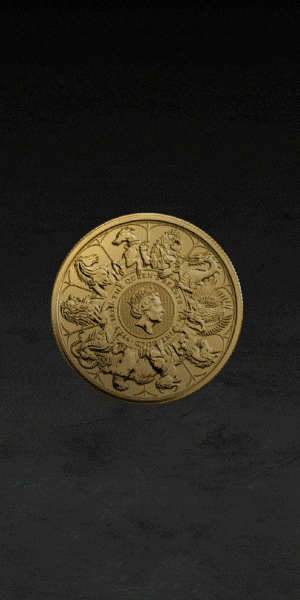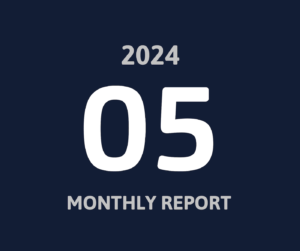Key Takeaways
✅ Every investor should have an investment plan
✅ Keeping things simple & fun is important
✅ Automated investing in low-cost ETF is recommended
✅ Give the process time, patience is key
I recently received the following email from a member of my little community:
“I am setting aside a bit of money to invest each month and am finding it hard to decide where to start. I’ve been essentially putting my money on ETFs out of fear of starting out wrong. But I just read that I might be doing exactly that. Is there a blog post on your site that provides some advice on how to start with investing?”
As other readers asked me a similar question before, I like to share what I generally recommend for people who also like to start investing.
0️⃣ Before you start.
Before you start with investing, open a 100% free account with a low-cost discount broker.
You will not rely on the experience of an expensive advisor or fund manager but rather take matters into your own hand. Therefore, you want to use a stock broker that offers a wide variety of ETFs (what are ETFs?), and automated investment plans, such as TradeRepublic (in the E.U.), Betterment (in the U.S.), or Bitpanda.
1️⃣ Calculate how much you like to invest.
Start by calculating how much (family) expenses you need per month, then multiply this by 6X. Example: Expenses of 2,500 USD per month x6 = 15,000 USD. Keep at least 15,000 USD in your current account, consider any upcoming larger expenses (holidays, car,..), and move the entire rest to your new investment account.
2️⃣ Have a simple plan.
Let’s begin by creating a simple plan that is both workable and fun to use. Whatever amount you have available, the first decision you have to make is to either invest all in one go, or average into the market over a certain period of time. Essentially, when starting with investing, you have three options, of which I prefer the 2nd one:
Simple Investment Plan 1 – ‘All-In’:
– You invest 100% of the available funds in one go
– This bears the risk of bad market timing
– Should the market tank, you won’t be able to buy at lower prices
– Start with investing slowly, no need to go all-in
– WiseStacker’s Take: ⭐️⭐️ Not recommended
Simple Investment Plan 2 – Golden Middle
– Invest 50% of the total sum today
– Invest 5x 10% over the next 5 months
– After six months you will be fully invested
– This approach is good when you start with investing
– WiseStacker’s Take: ⭐️⭐️⭐️⭐️⭐️ Recommended approach. Regardless of what happens, you are either already invested, or you have dry powder left.
Simple Investment Plan 3 – DCAing:
– Invest 10% on the day you receive your salary
– Do this for 10 months to be fully invested
– By this, you are dollar-cost averaging (DCA) into the market
– WiseStacker’s Take: ⭐️⭐️⭐️⭐️ ⭐️ Good option.
Personally, The Golden Plan is what I recommend to most of my friends and family members when they start investing.
3️⃣ Set a regular ‘stocktaking day’.
You put a lot of heart and sweat to earn some money. Make it a custom to take stock of your assets regularly (annual at the minimum, monthly at max). List all your asset buckets and check the current value. Example list:
– Cash
– Debt
– Stocks
– ETFs & Mutual Funds
– Cryptocurrencies
– Precious Metals
– Real Estate
– Bonds
– Others
Use my free Simple Investment Plan Google Sheet – make a copy and start using it!
4️⃣ Get rid of ‘bad’ debt.
I consider mortgage debt generally as good debt, but high-interest credit card debt, or car loans, as ‘bad debt’. Before thinking of investing money in the stock market, do everything you can to pay off debt with interest rates higher than 5%. There is no point trying to make 7% in the stock market when +10% of your money flows out the door!
5️⃣ Buy & hold one single low-cost stock ETF.
When you start out as a new investor, have a simple investment plan and choose just one total market ETF, ideally an MSCI or FTSE All-World Index ETF. Funds like these typically contain 500 – 4,500 of the most successful companies in the world. Regardless if tech, healthcare, energy or AI stocks will be the next big hype, you can rest assured and sleep well knowing that whenever an innovative company makes it into the top 10, you will own it!
Best ETFs for a simple investment plan
| Top MSCI World ETFs | AUM in Bio USD | Fees/yr | Dividends |
| Fidelity High Dividend (FDVV) | $1.7 | 0,19% | Accumulating |
| Xtrackers MSCI World (XDW0) | $8.9 | 0,19% | Accumulating |
| HSBC MSCI World (HMWD) | $5.4 | 0,15% | Distributing |
| Schwab US Dividend Equity (SCHD) | $48.6 | 0,06% | Distributing |
My recommendation is to keep things simple and start out by investing in just one single all-world ETF. All of the above-listed ETFs are excellent options to start investing. I briefly present each ETF below:
Fidelity High Dividend (FDVV)
ETF Name: Fidelity High Dividend ETF (FDVV)
ETF Summary: A low-cost fund that invests in high-yield stocks, FDVV holds approximately 100 dividend-paying stocks, including well-known names such as Procter & Gamble (PG), Microsoft (MSFT), and JPMorgan Chase (JPM).
AUM (Assets Under Management): 1,690 Mio Euro
TER (Total Expense Ratio): 0.15% p.a.
Dividend Policy: quarterly dividends
WiseStacker’s Take: ⭐️⭐️⭐️
Xtrackers MSCI World (XDW0)
ETF Name: Xtrackers MSCI World UCITS ETF 1C
ETF Summary: Tracks the MSCI World Index, providing access to international stock markets in 23 developed countries.
AUM (Assets Under Management): 8,899 million Euro
TER (Total Expense Ratio): 0.19% p.a.
Fund Inception Date: July 22, 2014
Dividend Policy: Dividends are reinvested within the ETF (accumulating)
WiseStacker’s Take: ⭐️⭐️⭐️⭐️ Go with this ETF if you prefer accumulating dividend policies (the fund instantly re-invests the proceeds back into its holdings).
HSBC MSCI World (H4ZJ / HMWD)
ETF Name: HSBC MSCI World UCITS ETF USD
ETF Summary: Tracks the MSCI World Index, providing access to international stock markets in 23 developed countries.
AUM (Assets Under Management): 5,455 million Euro
TER (Total Expense Ratio): 0.15% p.a.
Fund Inception Date: December 8, 2010
Dividend Policy: quarterly dividends
WiseStacker’s Take: ⭐️⭐️⭐️⭐️⭐️ If I could only choose one ETF, I’d go with this one. It has rock-bottom low fees (0.15% p.a.!), substantial AUM with $5.4 Bio USD, and distributes quarterly dividends.
Schwab US High Dividend ETF (SCHD)
ETF Name: Schwab US High Dividend ETF (SCHD)
ETF Summary: A low-cost fund that aims to track the total return of the Dow Jones U.S. Dividend 100™ Index.
Holdings: SCHD holds approximately 104 dividend-paying stocks.
AUM (Assets Under Management): The ETF currently has total assets under management of $48,6 Bio.
TER (Total Expense Ratio): The ETF has a total expense ratio of 0.060% per annum (excellent!).
Dividend Policy: quarterly dividends
WiseStacker’s Take: ⭐️⭐️⭐️⭐️ A very solid choice, however, 100% U.S. centric. I believe geographic diversification is key, hence I’d rather go with a global ETF.
6️⃣ Turn on the auto-pilot.
This is one of the most important points and often gets neglected. Set up an automated investment plan, so that on the day your salary hits your account, a fixed amount gets instantly invested in your selected ETF. This small trick is important for successful long-term investing! Many investors don’t do that, but it is critically important.
7️⃣ Trust in the power of compounding.
Einstein called the power of compounding the seventh wonder of the world.
Since 1926, the S&P500 index would have yielded you a 10.5% yearly return! It would have turned $1 into over $13,000 by now, even with
- 16 recessions,
- one Great Depression,
- two world wars,
- dozens of smallerwars,
- a global pandemic, and,
- lots of other geopolitical turmoil.
The magic of compounding interest only starts to materialize after 8 to 12 years, hence it is key to give this process time!
8️⃣ Don’t try to time the market.
Over the years, the timeless adage “timing the market is not as crucial as time in the market” has been repeatedly validated. Numerous studies exhibit that individuals who remain invested in a well-diversified portfolio for the long term generally achieve superior results compared to those who attempt to capitalize on market fluctuations.
9️⃣ Diversify!
No one knows the future. In the 90s almost every advisor told you “Buy Nokia stocks and keep it forever”! This hasn’t worked out well. That’s why you need to be diversified, both industry-wise and geographically. With one of the above-listed ETFs you are greatly diversified and well positioned.
Start With Investing – Quick Summary
I believe the most important thing to do is to choose one good low-cost ETF and set up a monthly investment plan on the day you receive your salary. By this, you will dollar-cost-average into a well-diversified basket of the most successful stocks in the world.
Additional Resources:
The style might be a bit dated, but the content is excellent. I really like this explainer video series called Investing 101 – 10 Investing Rules:
FAQ
How to start with investing?
It is important to have a simple and workable investment plan. Get rid of any bad debt. Automate your monthly purchases. Follow these steps:
1️⃣ Calculate how much you like to invest.
2️⃣ Have a simple plan.
3️⃣ Set a regular ‘stocktaking day’.
4️⃣ Get rid of ‘bad’ debt.
5️⃣ Buy & hold one single low-cost stock ETF.
6️⃣ Turn on the auto-pilot.
7️⃣ Trust in the power of compounding.
8️⃣ Don’t time the market.
9️⃣ Diversify!
What’s investment planning?
Investment planning is the process of taking stock of what you currently have/own/owe, and formulating a plan how to get to a “better situation”. An investment plan usually contains specific goals and methods how to reach those. Elements might include the type of investment products (ETFs, stocks, ..), brokerage accounts, monthly dollar-cost-average amounts, paying back of owed debt, etc.
Are investment plans good?
Yes, in fact, they are essential. Without a good investment plan, you run the risk of going nowhere. Define nothing, and you get exactly that. An investment plan can be kept simple – it needs to be workable and not over-complicate things. Example below:
1/ Determine your financial goals: Start by identifying your short-term and long-term financial goals. Understand how much money you want to save and for what purpose (e.g., retirement, education, purchasing a house, etc.).
2/ Set a budget: Assess your current financial situation and determine how much money you can comfortably invest each month.
3/ Allocate a specific amount from your monthly income to be invested in ETFs.
4/ Research ETFs: Explore different ETF options that align with your financial goals and risk tolerance. Consider factors such as expense ratios, performance history, diversification, liquidity, and the underlying assets of the ETFs.
5/ Determine asset allocation: Create a diversified portfolio by allocating your investments across different asset classes (e.g., stocks, bonds, real estate, etc.). The allocation should align with your risk tolerance and investment time horizon.
6/ Select ETFs: Based on your research and asset allocation plan, select specific ETFs that match your investment criteria. For example, if you want exposure to the stock market, you may choose a broad-market index ETF like the S&P 500 or a sector-specific ETF that focuses on a particular industry.
7/ Open an investment account
8/ Set up a monthly, recurring investment plan.
Which investment plan is best?
Keep it simple and have a workable plan. The biggest enemy of a good plan is a “perfect plan”. Set aside an amount you can invest on a monthly basis. Set up an automated process via a low-cost broker. Choose a well-diversified global ETF. Give the process time.
How to make an investment plan?
You can choose a simple investment plan with 3-4 steps, or a very complex one with about a dozen steps. The investment plan I recommend has about 9 steps:
1️⃣ Calculate how much you like to invest.
2️⃣ Have a simple plan.
3️⃣ Set a regular ‘stocktaking day’.
4️⃣ Get rid of ‘bad’ debt.
5️⃣ Buy & hold one single low-cost stock ETF.
6️⃣ Turn on the auto-pilot.
7️⃣ Trust in the power of compounding.
8️⃣ Don’t time the market.
9️⃣ Diversify!






 Age when reaching FI: 40 in 2018
Age when reaching FI: 40 in 2018 Left the rat race: May 2017
Left the rat race: May 2017 Living in: Singapore
Living in: Singapore Number of kids: 2
Number of kids: 2






 Services I Love
Services I Love








